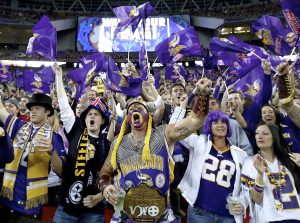

Good Leaders: What’s your favorite team?
Paul Batz
[fusion_builder_container hundred_percent=”yes” overflow=”visible”][fusion_builder_row][fusion_builder_column type=”1_1″ background_position=”left top” background_color=”” border_size=”” border_color=”” border_style=”solid” spacing=”yes” background_image=”” background_repeat=”no-repeat” padding=”” margin_top=”0px” margin_bottom=”0px” class=”” id=”” animation_type=”” animation_speed=”0.3″ animation_direction=”left” hide_on_mobile=”no” center_content=”no” min_height=”none”]
The question, What’s your favorite team?, mostly triggers a sports-response like the Vikings, Packers, Yankees, Twins or Lakers. Maybe even the Gophers, Cornhuskers and Crimson Tide. Or your local high school team (Jaguars?).
But sports teams seldom teach practical leadership lessons about how to build a favorite team in the workplace. The messages we typically receive are about heroic efforts and win/loss battles that reinforce a bygone era in the workplace.
Team thinking
Anyone who works for a living belongs to a team. It’s not as glamorous as the NFL, but whenever a task requires us to work together we are part of a team.
Nursing stations. Financial advisors. Risk management. Auto repair. Rooftop restaurants. These are all teams: some formal and structured; others informal and loose. Especially committees, boards, and task forces benefit from team-thinking.
What do the best teams have in common?
Our research and coaching affirms two really important ingredients for teams. The good leaders who produce great results with their teams do these two things:
- Help team members develop a genuine care and concern for one another – both personally and professionally.
- Create a culture where the team is actively involved in building the plans and solving the most difficult problems together.
 Number 1 is a “relational” approach and number 2 is “structural.” These are the two ingredients that, when mixed together like epoxy, create a powerful bond that makes great things possible.
Number 1 is a “relational” approach and number 2 is “structural.” These are the two ingredients that, when mixed together like epoxy, create a powerful bond that makes great things possible.
What this means for you at work is very similar to watching Notre Dame football on TV. Even though the superstars get most of the publicity for making the big score, it’s the ordinary people working together who make the great things possible. Caring, encouraging, clarifying, supporting and challenging…and helping each other be accountable. It’s beautiful when it works.
The challenge
[/fusion_builder_column][fusion_builder_column type=”1_1″ background_position=”left top” background_color=”” border_size=”” border_color=”” border_style=”solid” spacing=”yes” background_image=”” background_repeat=”no-repeat” padding=”” margin_top=”0px” margin_bottom=”0px” class=”” id=”” animation_type=”” animation_speed=”0.3″ animation_direction=”left” hide_on_mobile=”no” center_content=”no” min_height=”none”]
Over the past five years I’ve been asking leaders in speeches, retreats and workshops this question: How many of you have at least four hours of structured training in “how to be a team leader?” Consistently, only 1 in 4 raises their hand…meaning that 75% of our leaders are learning on the job. That explains a lot of confusion, hard feelings and inefficiency.
This is where sports teams are really different: the team leaders get lots of training to become team leaders…so they can learn to win!
Good leaders today look at every goal as an opportunity to build a high-performing team. And they seek out the best coaching and training to help them learn to win.
Please share with me, what’s your favorite team at work and why?[/fusion_builder_column][/fusion_builder_row][/fusion_builder_container]




